 Politics
Politics  Politics
Politics  Weird Stuff
Weird Stuff Ten Bizarre Facts About The Doge Meme
 Our World
Our World 10 Ways Your Christmas Tree Is More Lit Than You Think
 Movies and TV
Movies and TV The 10 Coolest Stars to Set Sail on The Love Boat
 History
History 10 Things You Didn’t Know About the American National Anthem
 Technology
Technology Top 10 Everyday Tech Buzzwords That Hide a Darker Past
 Humans
Humans 10 Everyday Human Behaviors That Are Actually Survival Instincts
 Animals
Animals 10 Animals That Humiliated and Harmed Historical Leaders
 History
History 10 Most Influential Protests in Modern History
 Creepy
Creepy 10 More Representations of Death from Myth, Legend, and Folktale
 Politics
Politics 10 Political Scandals That Sent Crowds Into the Streets
 Weird Stuff
Weird Stuff Ten Bizarre Facts About The Doge Meme
 Our World
Our World 10 Ways Your Christmas Tree Is More Lit Than You Think
Who's Behind Listverse?

Jamie Frater
Head Editor
Jamie founded Listverse due to an insatiable desire to share fascinating, obscure, and bizarre facts. He has been a guest speaker on numerous national radio and television stations and is a five time published author.
More About Us Movies and TV
Movies and TV The 10 Coolest Stars to Set Sail on The Love Boat
 History
History 10 Things You Didn’t Know About the American National Anthem
 Technology
Technology Top 10 Everyday Tech Buzzwords That Hide a Darker Past
 Humans
Humans 10 Everyday Human Behaviors That Are Actually Survival Instincts
 Animals
Animals 10 Animals That Humiliated and Harmed Historical Leaders
 History
History 10 Most Influential Protests in Modern History
 Creepy
Creepy 10 More Representations of Death from Myth, Legend, and Folktale
Top 10 Bizarre Smells From 18th Century England
The majority of people are aware of humanity’s less-than-hygienic history. Between fabricating eyebrows from the skin of a mouse, a British monarch’s belief that a bath would be detrimental to his health, the Romans’ use of lye (An ash and urine mixture) to wash clothes and taking more than 300,000 years to invent toilet paper, we’ve had far from a sterile track record.
What most people are not aware of, are the smells involved with such methods of ‘Hygiene’. The following list is a collection of delightful aromas from a period that coincided with the Romantic Era, but they are not nearly as charming. Brace yourself—It’s Georgian England.
10 Times Nature Smelled Like Something Totally Unexpected
The majority of people are aware of humanity’s less-than-hygienic history. Between fabricating eyebrows from the skin of a mouse, a British monarch’s belief that a bath would be detrimental to his health, the Romans’ use of lye (An ash and urine mixture) to wash clothes and taking more than 300,000 years to invent toilet paper, we’ve had far from a sterile track record.
What most people are not aware of, are the smells involved with such methods of ‘Hygiene’. The following list is a collection of delightful aromas from a period that coincided with the Romantic Era, but they are not nearly as charming. Brace yourself—It’s Georgian England.
10 Otto of Rose
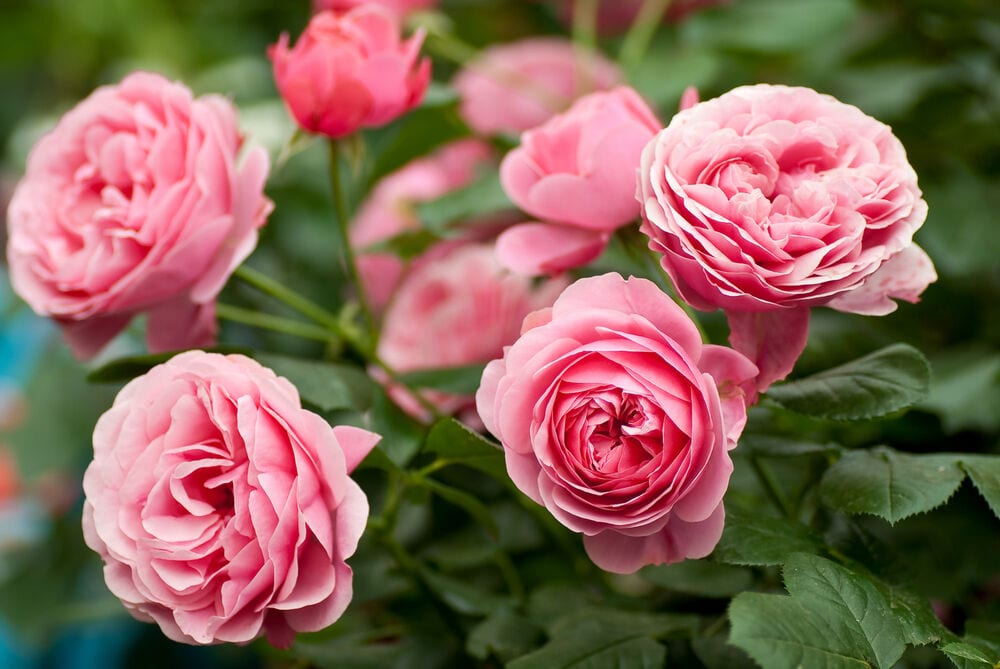
The word ‘Perfume’ comes from the Latin for ‘To scent by smoking’. The first perfumes were used to protect against the plague, as it was believed that disease could be prevented by ‘Purifying the air and warding off bad odours’. By the second half of 18th century, Otto of Rose had become the most popular perfume. It was concocted by heating rose petals and water in a copper still, and then extracting the oil from the mixture.
Because of its popularity, there was great paranoia amongst the Georgian English about counterfeit perfume. According to an 1831 guide for servants, to check for fake perfume; “Drop a very little otto on a clean piece of writing paper and hold it to the fire. If the article be genuine, it will evaporate without leaving a mark on the paper; if otherwise, a grease-spot will detect the imposition.”
The Otto of Rose’s popularity was largely owed to the horror of prior perfumes. Civet was a perfume extracted from a gland near the anus of the civet cat. Seemingly Georgians began to feel that the wearing of substances removed from a cat’s bum was rather ungentlemanly.
9 Tobacco
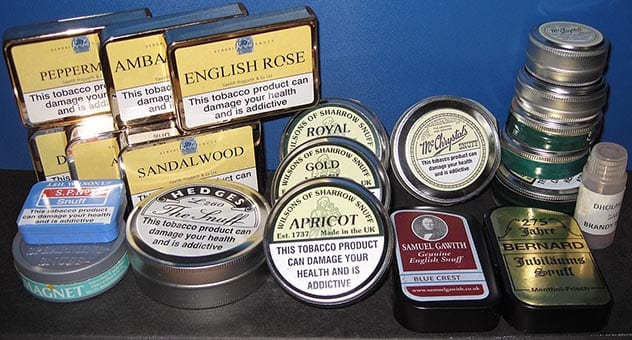
During Georgian England, there was an utter explosion of social life. In the 17th century, men often congregated to smoke their pipes in coffee houses, but by the 1700s tobacco had earned itself an unsavoury connotation. The Georgians believed that women could not tolerate tobacco smoke which led to allegations of women leaving their husbands if they refused to part with their pipes. Puffing a pipe in public was also regarded as being impolite.
As a replacement, Georgians began to snuff; the snorting of finely ground tobacco up one’s nostril. While this was fashionable, some believed it to be abhorrent. There were a number of unpleasant side-effects that went along with it; coughing, grunting and spitting. The main benefit was that it didn’t invade other people’s personal space, as a wafting cloud of tobacco smoke would. That said, people gathered at church were reported as being disgruntled by the noises produced by those snuffing during mass!
8 Fish
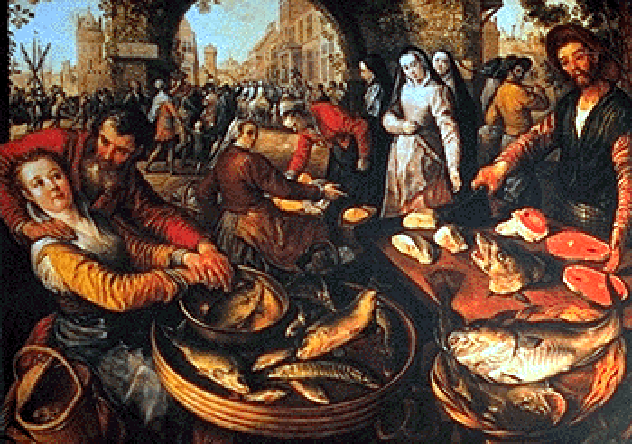
Marketplaces in Georgian England were very different to the supermarkets of today. There were no food safety standards, packaging or use-by dates, so ‘Caveat Emptor’ (‘Let the buyer beware’) applied. Purchasing gone-off food could cause disease and could offend your house guests. To prevent this, household manuscripts were printed to inform Georgians how to test their food. Meat and fish were tested by sniffing; if they had a ‘slimy’ smell, they should be avoided.
Pheasants were examined around the neck to check that they didn’t have a ‘tainted’ smell. Butter also needed to be checked before purchase, but buyers were warned to bring their own knife to test, as a merchant could simply offer the best piece of the stick.
Billingsgate women, who sold fish, were notorious for being sweaty and angry at their customers. For some, testing their goods appeared insulting. It suggested that they were seen as not trustworthy. Because of this, some Georgians wouldn’t be cod dead participating in such practices.
7 Paint

Although this smell may indeed seem like a rather strange proposal, the smell of paint is one that is regularly referenced in Georgian diaries. Because redecorating was not a common occurrence, this smell was a memorable one. Georgian paints were concocted from a mixture of linseed oil and turpentine, and as a result they had a particularly noticeable and pungent odor.
Bernardino Ramazzini was an Italian physician who first suggested that the ingredients used in paint production often led to producers losing their sense of smell. In fact, he was so engrossed in smells that he believed that someone should write, ‘A natural and physical history of odors’!
6 Ammonia

The smell of ammonia is one that is particularly difficult to mistake. The substance itself is composed of a combination of hydrogen and nitrogen, most commonly found in fermenting urine.
This smell provokes our trigeminal nerve—A type of nerve associated with facial expressions. The Georgians became obsessed with nerves. A person with sensitive nerves was held to a higher regard in society. Women were believed to be particularly disposed to anxiety. Ammonia was used to ‘Revive the senses’. Georgian novels and dramas even depicted heroines sniffing corked bottles of ammonia! Georgians later believed that smelling salts could be used to revive people who had been drowned or asphyxiated.
However ammonia was not the only maddening technique that was tested—One method even involved pumping a tobacco smoke emena up one’s rear end—Indeed an unpleasant wake-up call.
10 Things You Didn’t Know You Could Smell
5 Marzipan
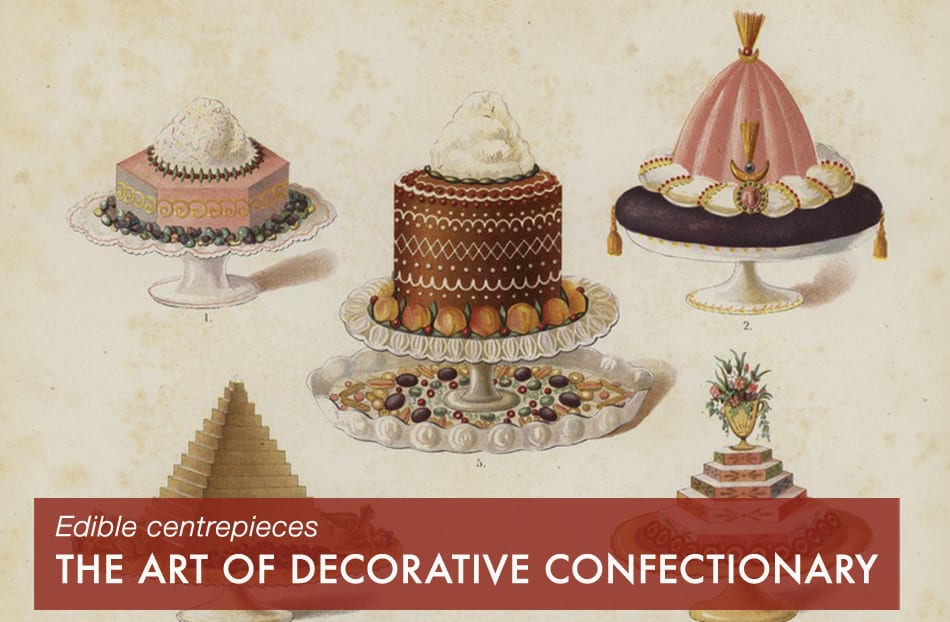
The Industrial Revolution occurred at the same time as Georgian England. At this time, there was massive urbanization. There was an opening opportunity for townspeople to purchase exotic ingredients and to create more sophisticated sweets. Marzipan became a particular favorite. Crafted from almonds, sugar and rose water, they were easily made and not unaffordable. Marzipan sweets were generally eaten at the end of a meal, and they had a distinct almond-like smell.
While they were delicious treats, marzipan was also used in sculpture—Including making people, animals and castle—A decidedly fashionable model. The creations were then left at the centre of the dining table, and became a hallmark of Georgian decoration.
4 Wigs
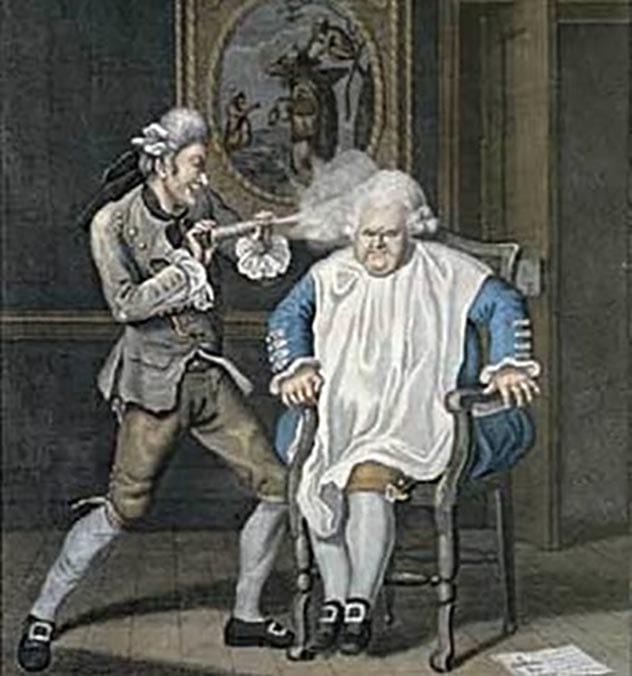
The Georgians may have used marzipan in sculpture, but the real artwork occurred with Georgian wigs. Hair was piled on top of pads and wire structures to create intricate masterpieces for the drawing room. For most, simply using their own hair was not enough and so it was infused with horse hair. 1760s styles including an egg-shape, but this later elongated into a classic pouf.
The Duchess of Devonshire became famous for her extravagant bouffant when she built a three-foot tower of hair including stuffed birds, waxed fruit and even model ships. These styles were incredibly expensive to make, and so they were worn for weeks on end without cleaning. Inevitably, creepy crawlies came to nest and Georgian women developed a scratching rod to ward off the pitter-patter of their miniature tenants.
3 Body Odor
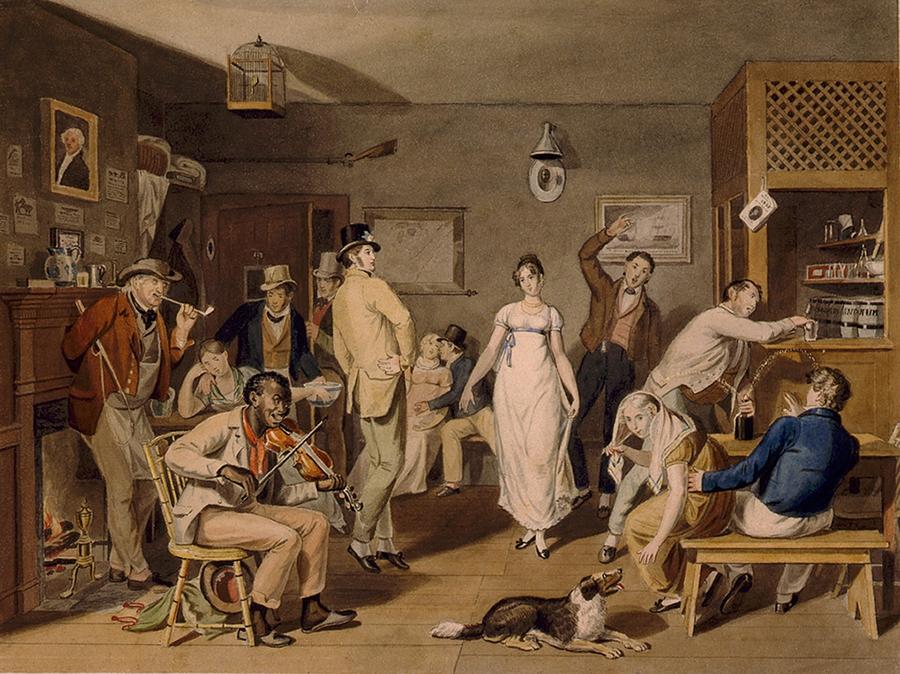
The situations that Georgians inhabited did not easily coincide with cleanliness. Despite their glamorous aura, people were utterly filthy. Hands and faces received a daily dousing, but an entire immersive washing was regarded as bad for health. The dresses worn by women caused particular issues.
Because of their heavy material, they caused the wearer to sweat excessively. Deodorants were non-existent, and the resulting stink was horrendous. On top of this, clothes themselves were washed only washed once each month. Under garments were washed and changed more often. But they were cleansed using lye—The same ash and urine mixture used by the Romans. Classy.
2 Bad Breath

Furthermore, the Georgians were prone to carrying around a waft of rotting teeth. Cleansing-tooth powders had begun to be used, but these contained sulfuric-acid, which stripped enamel from teeth. The best methods of warding off even more stench was to use herbs or parsley. When a tooth became a lost cause, it was pulled from the gums with a plier. No anesthetics, of course.
To prevent them from ending up with a gummy smile, they sought porcelain replacements. Where possible though, they preferred to purchase live dentures. The poor often sold their teeth to support the market— A viable business proposal, for those so-inclined.
1 Bodily Fluids
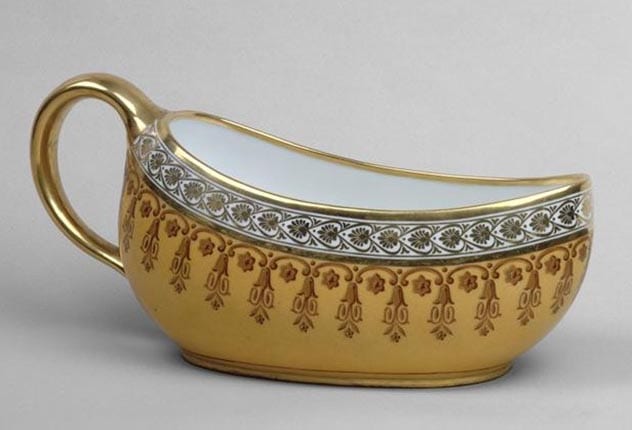
The unsolved mystery of sanitary hygiene in Georgian women is one that has puzzled countless historians. With no knickers to attach any sort of protection, they were forced to rely on Mother Nature, or so it seems. What is more proven, is their toilet habits.
Ladies at the royal court relied upon a porcelain jug to carry out their business, a device called a bourdaloue. It was clenched between one’s thighs, beneath their skirt. It was not unheard of for a woman to continue conversing with those around her while she urinated!
These ten distinct scents are indeed revolting. Unfortunately however, some of them have prevailed through history. While scented wigs are usually less common nowadays, body odors are still unequivocally existent, as is bad breath. The difference is that today, there is in many countries widespread availability of showers and deodorants. That these smells can still be smelled goes to show just how disgusting we really are.
Top 10 Incredible Smells That Will blow Your Mind








